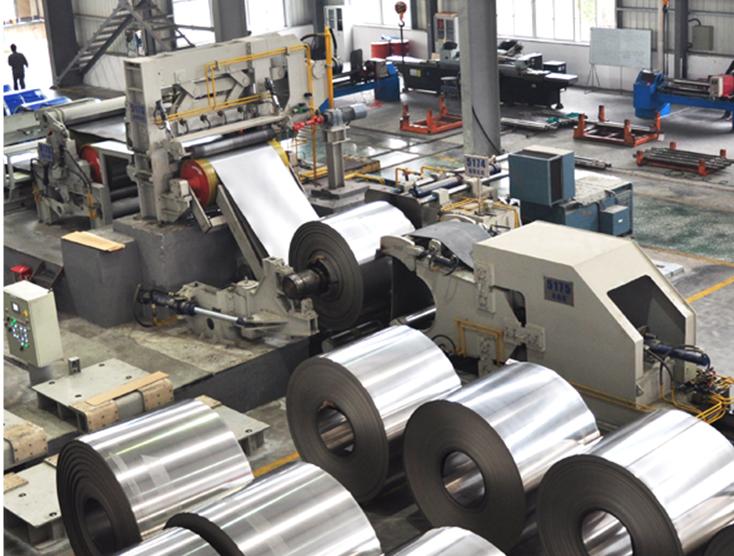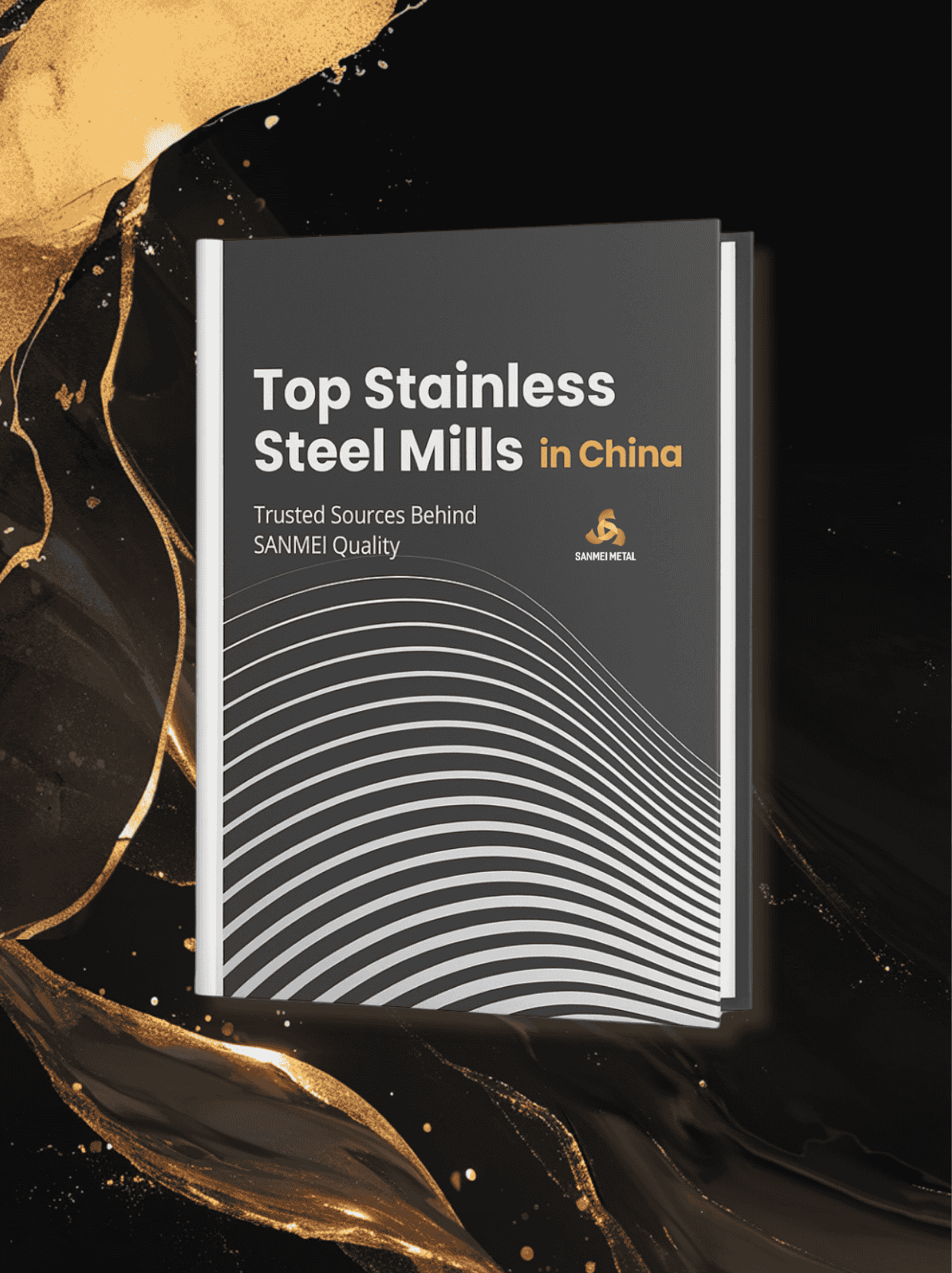304 және 201 баспайтын болат: қайсысы жақсы? (Жаңа зерттеу)
Тот баспайтын болат өзінің ерекше коррозияға төзімділігімен және әмбебап өнімділігімен танымал, бұл оны күнделікті өмірде және өнеркәсіптік қолданбаларда басты орынға айналдырады. 201 және 304 тот баспайтын болат көптеген түрлердің ішінде ең кең таралғаны ретінде ерекшеленеді. Дегенмен, олар химиялық құрамы, коррозияға төзімділігі, механикалық қасиеттері және тамаша пайдалану жағдайлары бойынша айтарлықтай ерекшеленеді. Осы айырмашылықтарды зерттеп, саналы шешім қабылдауға көмектесейік.
Негізгі айырмашылықтар: композиция және өнімділік

201 және 304 тот баспайтын болаттың химиялық құрамын салыстыратын кесте:
Элемент | Тот баспайтын болат 201 | Тот баспайтын болат 304 |
Көміртек (C) | ≤ 0,15% | ≤ 0,08% |
Хром (Cr) | 16% - 18% | 18% - 20% |
Никель (Ni) | 1% - 2% | 8% - 10% |
Марганец (Mn) | 5.5% - 7.5% | ≤ 2% |
Кремний (Si) | ≤ 1% | ≤ 1% |
Фосфор (P) | ≤ 0,06% | ≤ 0,045% |
Күкірт (S) | ≤ 0,03% | ≤ 0,03% |
Азот (N) | 0.1% - 0.25% | ≤ 0,1% |
201 тот баспайтын болат никельдің бір бөлігін марганец мөлшері жоғары ауыстырады, бұл өндіріс шығындарын азайтады. Дегенмен, бұл айырбастау оның өнімділігін шектейді. Мысалы, оның пассивациялық пленкасы 304-ке қарағанда тұрақты емес, бұл оны коррозиялық ортада зақымдануға бейім етеді.
Керісінше, 304 тот баспайтын болаттан жоғарырақ никель мен хром бар, бұл коррозияға төзімділік пен механикалық өнімділікті айтарлықтай жақсартатын тығызырақ, тұрақты пассивациялық пленканы құрайды. Бұл 304-ті химиялық жабдық, сыртқы құрылымдар және жоғары сапалы ыдыс-аяқ сияқты талап етілетін қолданбалар үшін өте қолайлы етеді. 304-ті қатты дауылға төтеп беретін жоғары сапалы желге төзімді қолшатыр ретінде елестетіп көріңіз, ал 201 - аздаған жаңбыр үшін үнемді нұсқа.
Коррозияға төзімділік: Қоршаған орта маңызды

Тот баспайтын болаттың химиялық құрамы оның әртүрлі ортадағы әрекетін анықтайды.
Зерттеулер 201 баспайтын болаттан жасалған экспонаттар көбейгенін көрсетеді жарықшақтардың коррозиясы қышқылдық жағдайда сезімталдық, өйткені қышқылдар жарықтардағы электрохимиялық реакцияларды жеделдетеді. Мысалы, 1,0% NaCl бар 0,25моль/л H2SO4 ерітіндісінде 304 коррозияға төзімділігі 201-ден әлдеқайда асып түседі.
304 тот баспайтын болат берік пассивациялық пленкасының арқасында ылғалдылығы жоғары, қышқылды немесе химиялық коррозияға ұшырайтын ортада жақсы жұмыс істейді. Бұл оны сыртқы сәулеттік әрлеу және уақыт өте қатал жағдайларға ұшыраған химиялық контейнерлер үшін таңдаулы таңдау жасайды.
Механикалық өнімділік: күш пен икемділікті теңестіру

201 тот баспайтын болат жоғары беріктікке ие болғанымен, оның икемділігі 304-тен төмен. Бұл шектеу 201-ді иілу немесе дайындау кезінде жарылуға бейім етеді.
2022 жылы соңғы зерттеулер 304 баспайтын болат беттік механикалық илемдеу арқылы градиент наноқұрылымын құра алатынын атап көрсетеді. Бұл құрылым ұшақтың құрамдас бөліктері мен зымыран қаптамалары сияқты аэроғарыштық қолданбалар үшін өте маңызды тепе-теңдікке қол жеткізе отырып, тамаша икемділікті сақтай отырып, оның шығымдылығын арттырады. Мұндай инновациялар жоғары сұраныс сценарийлерінде 304-тің жоғары әмбебаптығын көрсетеді.
Неғұрлым айқын салыстыруды көргіңіз келе ме? Толық ақпарат алу үшін төмендегі бейнені тексеруге болады.
Құн мен құн: бюджет мәселелері

201 тот баспайтын болаттан төмен никель мөлшері өндіріс шығындарын азайтады, бұл оны сұранысы төмен, қысқа мерзімді жобалар үшін үнемді таңдау етеді. Дегенмен, оның төзімділігі шектеулі.
304 бастапқыда қымбатырақ болғанымен, коррозиялық орталарда ұзағырақ қызмет ету мерзімін және төмен техникалық қызмет көрсету шығындарын ұсынады. Жоғары төзімділік пен сенімділікті қажет ететін жобалар үшін 304-ке инвестициялау жақсы ұзақ мерзімді табысты қамтамасыз етеді.
Түс және сыртқы түрі: жылтыр мәселесі

Сенсеңіз де, сенбесеңіз де, 201 және 304 тот баспайтын болат арасындағы айырмашылық тіпті олардың сыртқы түрінен көрінеді. 304 тот баспайтын болаттан марганец аз болғандықтан, оның беті ақшылырақ. Екінші жағынан, 201 баспайтын болат құрамында марганецтің жоғары болуына байланысты қараңғы, күңгірт қабатқа ие болады.
Егер сіз эстетикаға ұмтылсаңыз және жылтыратылған көрініс маңызды болса, 304 баспайтын болат сіздің таңдауыңыз болып табылады. Бірақ егер сіздің жобаңыз үшін өнеркәсіптік немесе сәндік әрлеу жұмыс істесе, 201 дұрыс болуы мүмкін.
Қорытынды: Материалды өз қажеттіліктеріңізге сәйкестендіріңіз
Арнайы қолданбаңыз бен бюджетіңізге негізделген 201 және 304 баспайтын болаттан жасалған топсаларды таңдаңыз. Талапты емес орталардағы арзан шешімдер үшін 201 практикалық таңдау болып табылады. Жоғары коррозияға төзімділікті, беріктікті және ұзақ мерзімділікті талап ететін жобалар үшін 304 ең жақсы нұсқа болып табылады.
Таңдауыңызға қарамастан, дұрыс техникалық қызмет көрсету және дұрыс пайдалану тот баспайтын болаттың өнімділігін және қызмет ету мерзімін барынша арттыруға мүмкіндік береді.
Әлі де сенімдісіз бе? Бізбен хабарласыңы, және біз сізге ең қолайлы тот баспайтын болаттан жасалған жеке ұсыныстарды береміз.









[…] жолдары. Олардың химиялық құрамы, коррозияға төзімділігі, күші және бағасы әртүрлі. 201 тот баспайтын материалда марганец көп және никель аз. Бұл оны арзанырақ етеді, бірақ қатты немесе қышқыл жерлерде оңай тот басуы мүмкін. 304 тот баспайтын материалда […]